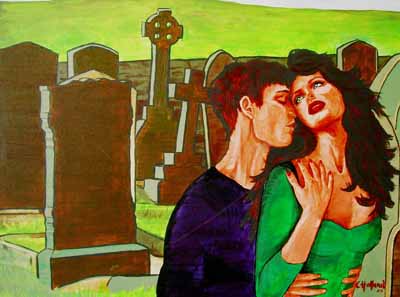story from Hindustan Times  image from wikimedia
image from wikimedia
It is said that on many Thursday nights, a ghost procession led by the last Mughal king and his beautiful consort went around the Red Fort. The procession was possibly that of one of Zafar’s children who died at the hands of the British.
In the 19th century when hundreds of minor principalities had divided India, Bahadur Shah Zafar, the last Mughal king, was reduced to preside over the dwindling empire in Delhi. The last ruler of the Timurid Dynasty, he was the son of Akbar Shah II by his Hindu wife Lalbai.
A published account in media says: “The apparition of the King was of average height, with broad shoulders, long arms but unusually short legs. The queen was tall like the letter Alif, as graceful as a cypress tree, with long raven-coloured hair; she had a narrow waist and short feet fitted in sandals adorned with pearls, which glittered in the moonlight.”
The people witnessed to this ghost procession say, “The King always wore loose pyjamas and the queen invariably spotted a long, gold-laced gharara, with a golden cummerbund, which reached almost to the ground and rustled in the breeze.”
Both apparitions appeared to be grief-stricken, because of the sudden demise of their child. They walked along the procession in measured steps, almost regally. The King’s head always mournfully dropped on his shoulder.
While some part of Bahadur Shah’s opus was lost or destroyed during the unrest of 1857-1858, a large collection did survive, and was later compiled into the Kulliyyat-i Zafar. Zafar’s poetries were about love and mysticism, with Delhi as the backdrop. Some say since Zafar was in love with his writings and that he revisits his preserved writings in the moonlight.
 Zafar’s gazal from bestghazals
Zafar’s gazal from bestghazals














